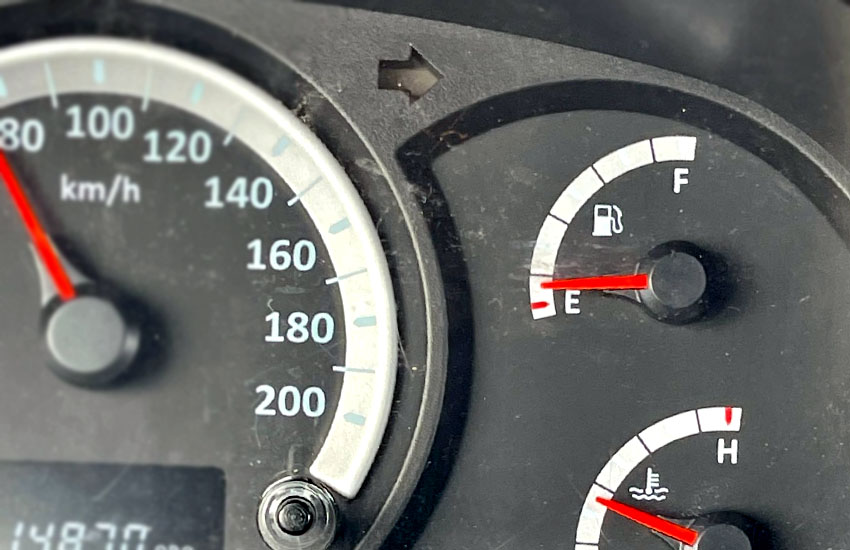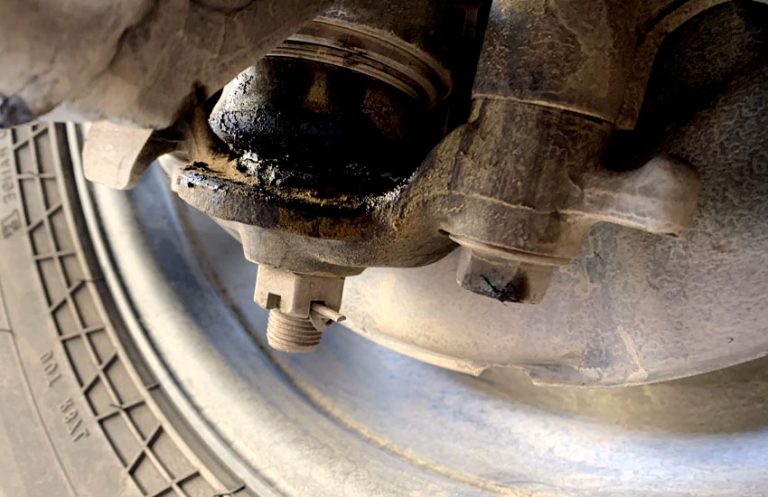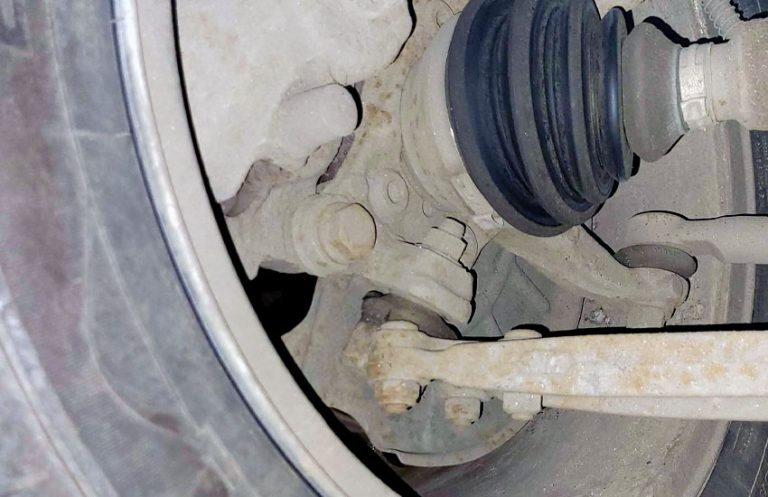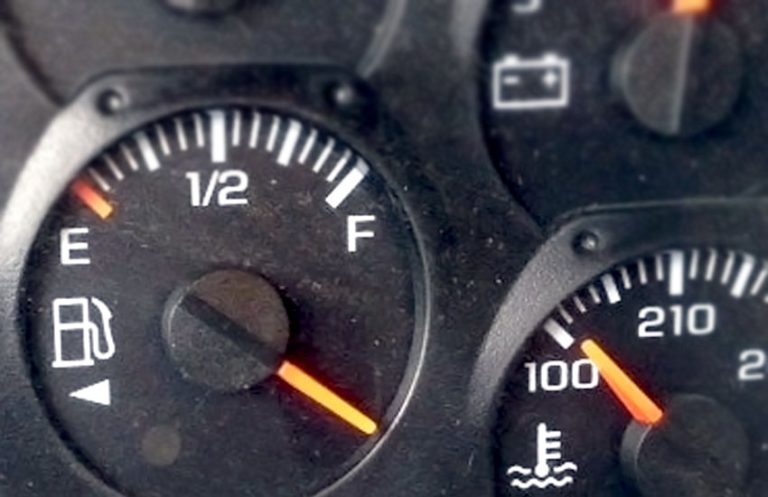Ever been driving down the road, cruising along, when you glance at your fuel gauge and see it reading empty—even though your tank is full? You might think your car’s playing a prank on you. But no, it’s actually a fairly common issue that many car owners face. In this blog post, we’re going to dive into why this happens, what it means, and how to fix it. Get ready for a fun and casual journey through your vehicle’s fuel system!

Why is My Fuel Gauge Reading Empty When My Tank is Full?
The feeling of panic when your fuel gauge reads empty, even though your tank is full, is something every driver can relate to. There’s a lot going on behind the scenes of your car’s fuel gauge, and sometimes things go awry. Let’s break it down.
The Fuel Gauge System: How It Works
First, let’s understand how the fuel gauge system works in your car. The fuel gauge is essentially made up of a few key components: the fuel sender unit, the fuel gauge itself, and the electrical system that connects everything.
The fuel sender unit, located in your fuel tank, measures the amount of fuel inside. It uses a float that moves up and down with the fuel level, and this movement is converted into an electrical signal that gets sent to your fuel gauge on the dashboard. The gauge then interprets this signal and shows you how much fuel is left.
Now, what happens when your gauge is reading empty, but the tank is full? A number of things could be going wrong.
The Role of the Fuel Sending Unit
One of the most common culprits is the fuel sending unit itself. If the float gets stuck, broken, or the sensor fails, it could send incorrect signals to the fuel gauge. This can cause your gauge to read empty, even though your tank is brimming with fuel. Over time, the sender unit can wear out due to constant exposure to fuel and other elements inside the tank. When that happens, the float might not move correctly, which means the gauge gets inaccurate readings.
Faulty Wiring or Electrical Issues
Another reason for the incorrect readings might be faulty wiring or electrical connections. The fuel gauge is wired into your car’s electrical system, and if there’s a short or loose connection somewhere, it can affect how the gauge functions. This kind of issue can cause erratic readings on your fuel gauge, including the frustrating “empty” warning, even when there’s plenty of gas in the tank.
The Fuel Gauge Itself: A Malfunction
Lastly, the fuel gauge might be malfunctioning. Just like any other component in your car, it’s possible for the fuel gauge to wear out or become defective. A broken gauge will send an inaccurate reading to the dashboard, confusing the driver into thinking they’re running on fumes when they’re actually good to go.
Common Causes of the Fuel Gauge Reading Empty Even with Full Tank
So, now that we know how the fuel gauge system works, let’s explore some common reasons why your fuel gauge might show empty, even though your tank is full. We’ll look into both the mechanical and electrical side of things to get a better understanding of the problem.
1. Broken or Stuck Fuel Sending Unit
As we mentioned earlier, a faulty fuel sending unit is often the main cause behind a misbehaving fuel gauge. If the float in the sender unit gets stuck or breaks, the car will think that the tank is empty. A stuck float can happen if the unit is dirty, damaged, or just old. When this happens, it’s almost like the car doesn’t know there’s any fuel in the tank.
How to fix it: Replacing a fuel sending unit can be a bit costly, but it’s necessary if you want to get accurate fuel readings again. Some cars make this replacement easier by allowing you to access the sending unit through the trunk, while others require you to drop the gas tank for access. Either way, it’s best to have a professional take a look.
2. Bad Electrical Connections or Wiring
Electrical issues are another common culprit for faulty fuel gauge readings. A loose wire or corroded connection can cause your fuel gauge to act up. If the electrical system is damaged, it could prevent the gauge from getting accurate signals from the fuel sender unit.
How to fix it: You may need to have your car’s electrical system checked. The wiring connected to the fuel sending unit needs to be in good condition, and the connectors should be clean and secure. A simple inspection by an auto mechanic can identify any issues.
3. Faulty Fuel Gauge
Sometimes, the issue is as simple as a faulty fuel gauge. If your gauge is malfunctioning or has become disconnected from the electrical system, it might not be able to display the correct fuel level.
How to fix it: Replacing a fuel gauge is usually less expensive than replacing the sender unit. However, it’s important to note that fuel gauge issues are often caused by wiring or sender unit problems, so be sure to have these checked first before replacing the gauge itself.
4. Grounding Problems
If your car’s electrical system doesn’t have a proper ground, it can interfere with various functions, including the fuel gauge. A poor or broken ground connection can send erratic signals to the gauge, causing it to read incorrectly.
How to fix it: You can inspect the grounding connections yourself or take your car to a mechanic who can fix the issue. Proper grounding is essential for the smooth functioning of many electrical components in your car, including the fuel gauge.
5. Fuel Tank Contamination
If there’s debris or dirt in the fuel tank, it can interfere with the fuel sending unit’s float. Over time, sludge and gunk from old or low-quality fuel can accumulate in the tank, leading to problems with the float and causing inaccurate readings.
How to fix it: Cleaning the fuel tank is a more intensive job that typically requires removing the tank and thoroughly cleaning it. If you notice other signs of tank contamination, like engine performance issues, this could be a good time to have the tank cleaned.
How to Troubleshoot the Fuel Gauge Issue Yourself
If you’re a DIY enthusiast or just want to take a look at the issue before heading to the mechanic, here’s a step-by-step guide on how to troubleshoot the fuel gauge problem:
Step 1: Check for Electrical Issues
Start by inspecting the electrical system connected to your fuel gauge. Look for any visible damage, corrosion, or loose connections. The wiring should be intact and free from fraying. If you’re comfortable with working on electrical components, you can use a multimeter to check the voltage at the fuel sender unit and fuel gauge.
Step 2: Test the Fuel Sending Unit
If you’re able to access the fuel sending unit, check for any visible damage or issues. If the float is stuck, try moving it manually to see if that corrects the reading. If the sender unit is damaged, it may need to be replaced.
Step 3: Check the Fuel Gauge
If the sender unit and wiring seem to be in good condition, the problem might lie with the fuel gauge itself. Test the gauge by measuring the voltage at the gauge to ensure it’s receiving the right signals. If the gauge is faulty, it may need to be replaced.
Step 4: Inspect the Fuel Tank
Finally, if all else seems in working order, check your fuel tank for contamination or dirt. If you notice any debris or sludge, it’s time to clean the tank to ensure smooth operation of the sending unit.
What to Do If Your Fuel Gauge Is Reading Empty When Your Tank Is Full
Now that we’ve covered some of the most common causes, what should you do if you’re dealing with this issue? Here are a few options for fixing the problem and getting back on the road without worrying about running out of fuel.
Option 1: Visit a Professional Mechanic
If troubleshooting on your own doesn’t yield results, it might be time to take your car to a mechanic. A professional can diagnose the problem with the fuel gauge system and fix any electrical or mechanical issues. Mechanics have the tools and expertise to quickly locate the source of the problem, whether it’s the fuel sending unit, the wiring, or the gauge itself.
Option 2: Replace the Faulty Part
Once you know what the issue is, you’ll likely need to replace the faulty part. If the fuel sending unit is damaged, that’s the most common replacement needed. If the fuel gauge or wiring is the issue, those components may also need to be swapped out. Keep in mind that repairing or replacing a fuel gauge system can be costly, but it’s necessary for the proper functioning of your vehicle.
Option 3: Live with the Inconvenience
If you’re on a tight budget or don’t want to deal with the hassle of repairs, you can opt to live with the inconvenience of inaccurate fuel readings. However, this isn’t the safest option, as it could lead to running out of fuel unexpectedly. It’s always best to get the problem fixed so that you can rely on your car’s fuel gauge.
I hope this article has given you a better understanding of why your fuel gauge might be reading empty even though your tank is full. Whether it’s a faulty fuel sending unit, a broken gauge, or an electrical issue, knowing the root of the problem can help you fix it quickly. Don’t let a malfunctioning fuel gauge stress you out—take the steps to address the issue and get back to enjoying your rides.
Frequently Asked Questions
Is it normal for the fuel gauge to fluctuate while driving?
Yes, it’s normal for the fuel gauge to fluctuate slightly while driving, especially when you make sharp turns or stop. However, if the fluctuation is significant, it may indicate a problem with the fuel sender unit or gauge.
Can a fuel gauge reading empty cause me to run out of gas unexpectedly?
If the fuel gauge is consistently reading empty despite a full tank, it can be a serious concern. It’s important to fix the issue to avoid the risk of running out of gas unexpectedly.
Do I need to replace the entire fuel gauge system if the sending unit is faulty?
No, you don’t need to replace the entire system. If the fuel sending unit is faulty, replacing that specific part should solve the problem. However, if the gauge itself is also malfunctioning, it may need to be replaced as well.
Is it safe to drive with a faulty fuel gauge?
While it’s technically safe to drive with a faulty fuel gauge, it’s not ideal. A malfunctioning fuel gauge can make it difficult to know how much fuel you have left, potentially leading to running out of gas unexpectedly.
Can low fuel cause the fuel gauge to read empty?
If the fuel level is very low, the fuel sender unit might not register the fuel level accurately, causing the gauge to read empty. However, this is usually not the cause of a full tank reading empty.
Is it possible to fix a stuck fuel float without replacing the sender unit?
In some cases, a stuck fuel float can be fixed by cleaning or repositioning the float. However, if the float is damaged, you’ll likely need to replace the fuel sender unit.
Do I need a mechanic to fix my fuel gauge problems?
While some troubleshooting can be done on your own, it’s often best to visit a mechanic for accurate diagnostics and repairs, especially if the issue involves electrical or complex parts.
Can a faulty fuel gauge affect my car’s fuel efficiency?
A faulty fuel gauge won’t directly affect your car’s fuel efficiency, but it can lead to driving with an inaccurate fuel level, which could result in running out of gas at an inconvenient time.


